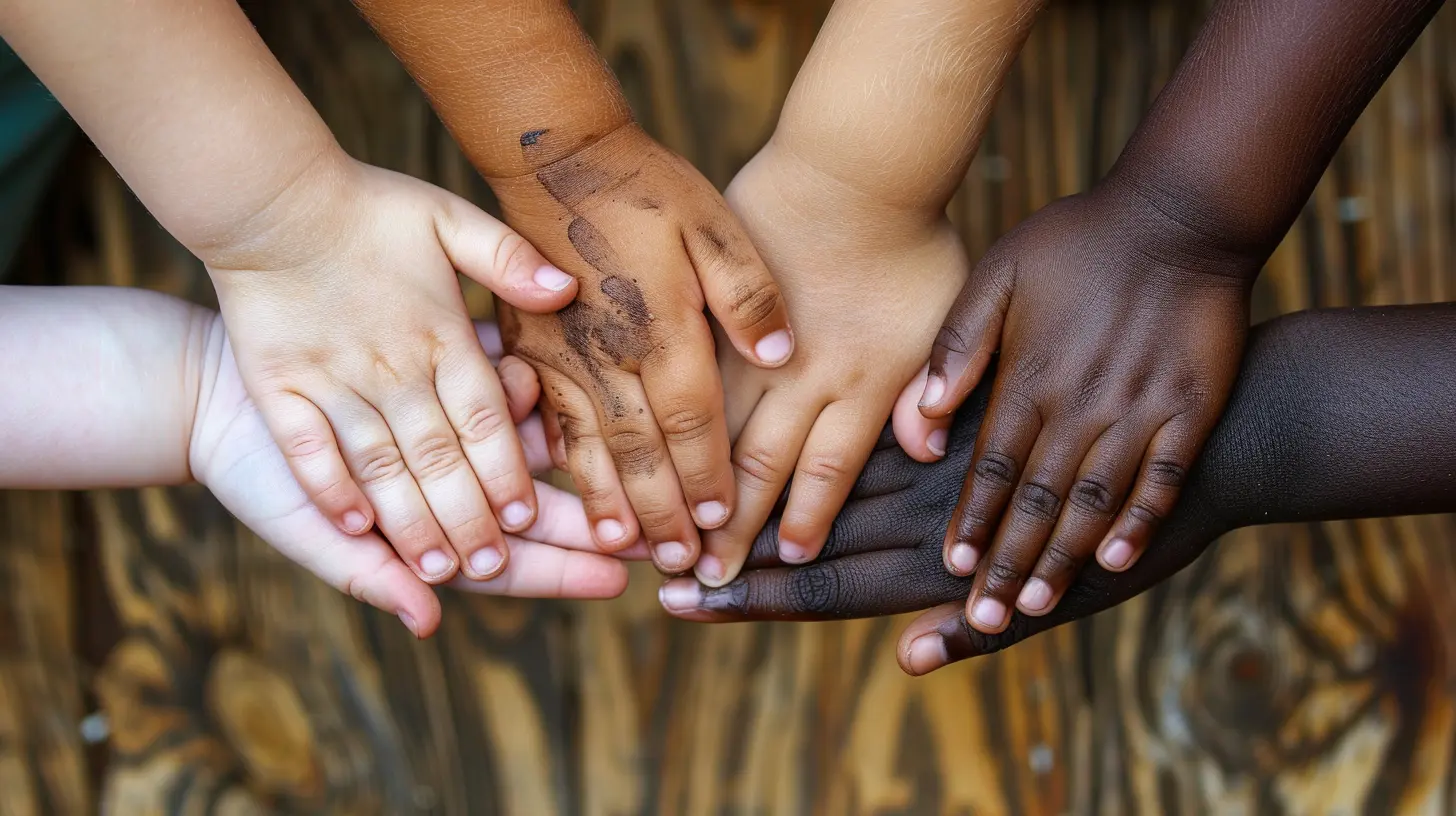Transracial Adoption: Celebrating Diversity in Your Family
3 November 2025
So, you're considering adoption, or maybe you're already knee-deep in bedtime stories, school drop-offs, and snack negotiations with your beautiful, multicultural crew. Either way, if your family looks like a rainbow slushie—colorful, blended, and perfectly sweet—you’re in the right place.
Transracial adoption is about more than just giving a child a loving home (though that’s a HUGE part of it). It’s also about embracing every part of their identity—and yours. Let’s dive headfirst into the joy, the challenges, and the absolutely heartwarming beauty of celebrating diversity in your family.
What is Transracial Adoption, Anyway?
Let’s keep it simple. Transracial adoption happens when parents adopt a child of a different race or ethnic background than their own.Picture this: a white couple adopting a Black child. Or an Asian single mom adopting a Latino son. It’s not one-size-fits-all. And that’s what makes it beautiful—like a patchwork quilt, where every square has its own story but they all come together to make something warm, comforting, and uniquely yours.
But just like quilting, it takes patience, intention, and love.
The Colorful Reality of Parenting Across Cultures
Okay, let’s get real for a second.Parenting is already kind of like trying to bake a cake without a recipe—sweet chaos. Add transracial adoption into the mix and voilà, you’ve got yourself a triple-layered cake with frosting from every corner of the globe.
So, what does it really look like? And how can you make sure your little one grows up feeling confident, proud, and wrapped in love?
1. Acknowledge the Differences—Don’t Ignore Them
Here’s the truth bomb: Love is essential, but it’s not enough on its own. You can't love away racism or cultural identity. So, don’t go the “We're colorblind” route. Your child isn’t invisible. Their culture, skin tone, and experiences matter.Instead, say things like:
- “Your skin is absolutely beautiful.”
- “Let’s learn more about your culture together.”
- “Tell me how you're feeling when things feel different or unfair.”
Your child’s identity is not something to sweep under the rug—it’s something to frame and hang in the family gallery wall.
2. Learn the Culture—Become an Honorary Member
No, you don’t have to become an expert overnight, but dipping your toes into your child’s cultural background is a giant step in the right direction.Here are some fun and simple things you can do:
- Cook traditional meals together. (Hello, dumpling night!)
- Celebrate cultural holidays. Diwali? Lunar New Year? Bring it on.
- Read books by authors from your child’s ethnic background.
- Take dance classes, visit cultural museums, or attend festivals.
It’s like going on a family vacation around the world—without ever leaving your hometown.
3. Build a Diverse Village
They say it takes a village to raise a child—and that village should look like the United Nations.Expose your child to mentors, teachers, neighbors, coaches, and friends who share their racial and cultural background. This creates what experts call “mirrors” that reflect who they are and let them feel seen.
Also, surround YOURSELF with diverse voices. If your friend group looks like your reflection in a mirror, it may be time to branch out.
4. Talk About the Tough Stuff (Yep, Even Racism)
This one’s not-so-fun but oh-so-important. Pretending discrimination doesn’t exist isn’t helping anyone—least of all your child.Conversations about race, bias, and identity should be age-appropriate but ongoing. It’s not a one-time chat—it’s like brushing teeth. You’ve got to do it regularly to keep things healthy.
If someone makes an ignorant comment in public? Speak up. Your child is watching. When they ask, “Why did someone say that?” don’t sweep it under the rug. Be honest.
Think of it like equipping them with armor. Not to make them hard—but to make them strong.
5. Make Your Home a Safe Space for Identity
Your home should be the soft place your child lands when the world feels hard.Fill your bookshelf with multicultural stories. Hang artwork that reflects your family’s diversity. Have dolls, action figures, and toys that represent a variety of races and cultures.
Most importantly—listen. When your child opens up about feeling “different,” don’t rush to fix. Sometimes the most powerful thing you can say is, “I hear you, and I love every part of you.”
6. Celebrate THEIR Story
Every adopted child has a unique backstory—and it’s worth honoring. Whether they were adopted as a baby or came into your life older, their history didn’t start with you. And that’s okay.Create photo albums, scrapbooks, or “life books” that include their cultural background, birth family (if appropriate), and life before adoption. Let them ask questions. Be transparent when you can, and when you can’t—love them through the gaps.
7. Connect with Other Transracial Families
Good news—you're not alone! There are tons of families on this journey, just like yours.Join online groups, attend meetups, or start a playgroup. Hearing from someone who "gets it" is like finding Wi-Fi in the middle of nowhere—pure magic.
Your child will also benefit from seeing other families that look like theirs. It validates their experience in a way that nothing else can.
8. Be Open to Unlearning
Let’s have a heart-to-heart.You’re going to mess up. (We all do.) You’ll say the wrong thing, ask an awkward question, or realize you’ve been taught something totally off-base.
Good. That means you’re learning.
Unlearning preconceived notions or biases is like spring cleaning your brain. It might be uncomfortable at first, but it makes room for better things. Keep listening, keep showing up, and give yourself some grace along the way.
9. Your Child’s Hair Might Be a Whole New Skill Set
This may sound silly, but for many transracial adoptive parents, hair care becomes an unexpected rite of passage.If your child has hair different from yours (think curls, coils, or textures you're unfamiliar with), don’t panic. YouTube tutorials, hair salons, and cultural beauty shops can become your new best friends.
And let’s be real—learning to do your child’s hair isn’t just about looking cute. It’s about connection, respect, and nurturing their confidence.
10. Celebrate the Blend
At the end of the day, your family is not defined by matching skin tones or shared DNA. You’re defined by bedtime giggles, car sing-alongs, and the way your child’s hand fits perfectly in yours.So celebrate the blend. Make your own traditions that mix cultures, languages, foods, and celebrations. Create a family identity that’s as unique and beautiful as the people in it.
Because here’s the secret: Love grows in all colors.
Final Thoughts: You’ve Got This!
Transracial adoption isn’t always easy—but nothing truly meaningful ever is. The world might throw a few curveballs, but your love, curiosity, and open heart can help your child feel like they belong—in your home, and in their skin.So keep learning, keep celebrating, and keep loving out loud. You’re raising a world-changer, and you’re doing a pretty amazing job.
Let your family be the living proof that diversity isn’t just something to be tolerated—it’s something to be treasured.
Helpful Resources to Bookmark
- 📚 Books: “Hair Love” by Matthew A. Cherry, “I’m Adopted” by Shelley Rotner- 🎧 Podcasts: “Adoption: The Long View”, “Black to the Beginning”
- 👩🏽👩🏾👦🏽 Communities: Transracial Adoption Facebook groups, local meetup groups, cultural centers
Remember: You’re not alone on this journey. There’s an entire village out here cheering you on!
all images in this post were generated using AI tools
Category:
AdoptionAuthor:

Karen Hurst
Discussion
rate this article
1 comments
Natalie Kirkpatrick
Embracing transracial adoption enriches our families and fosters understanding and love. Celebrating diversity not only strengthens our bonds but also teaches our children the beauty of different cultures. Let’s cherish this journey together!
November 6, 2025 at 4:03 AM

Karen Hurst
Thank you for your insightful comment! Embracing transracial adoption truly enhances our families and broadens our understanding of diverse cultures. Together, we can celebrate this beautiful journey!


